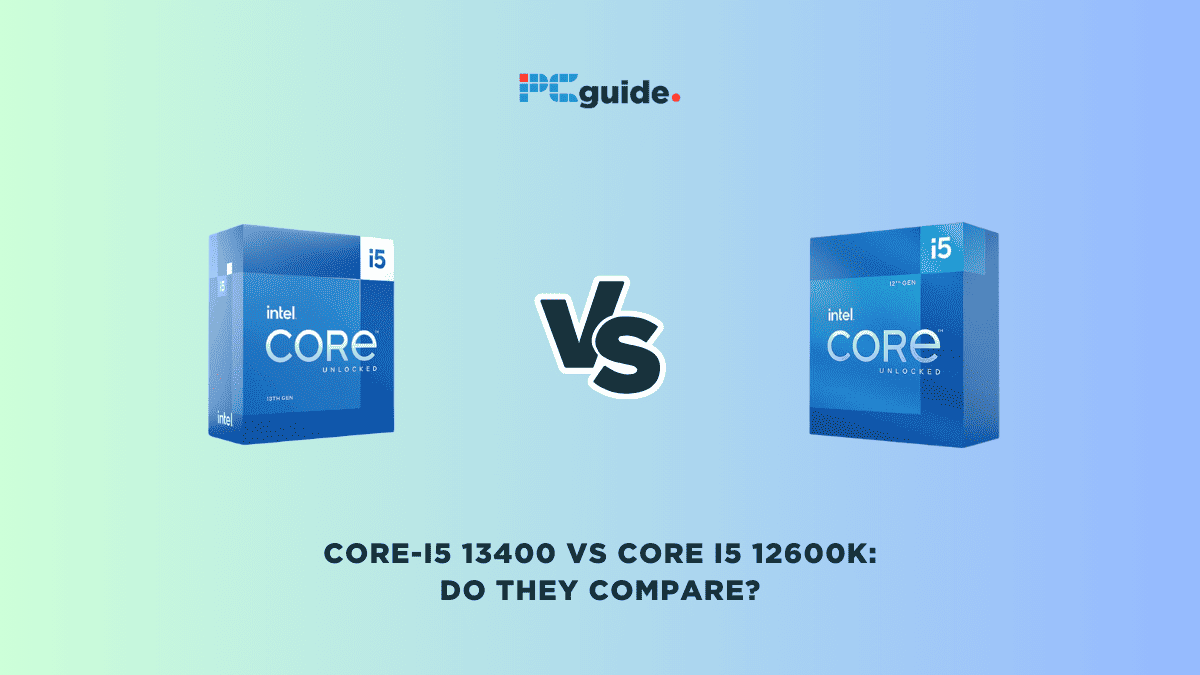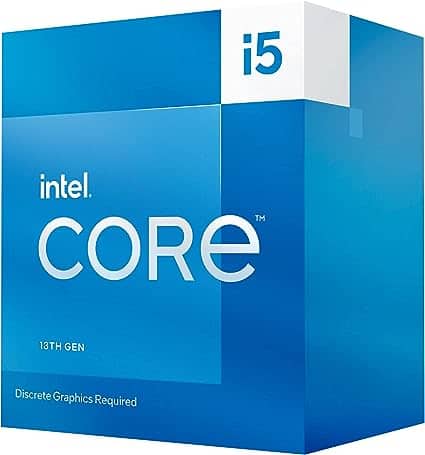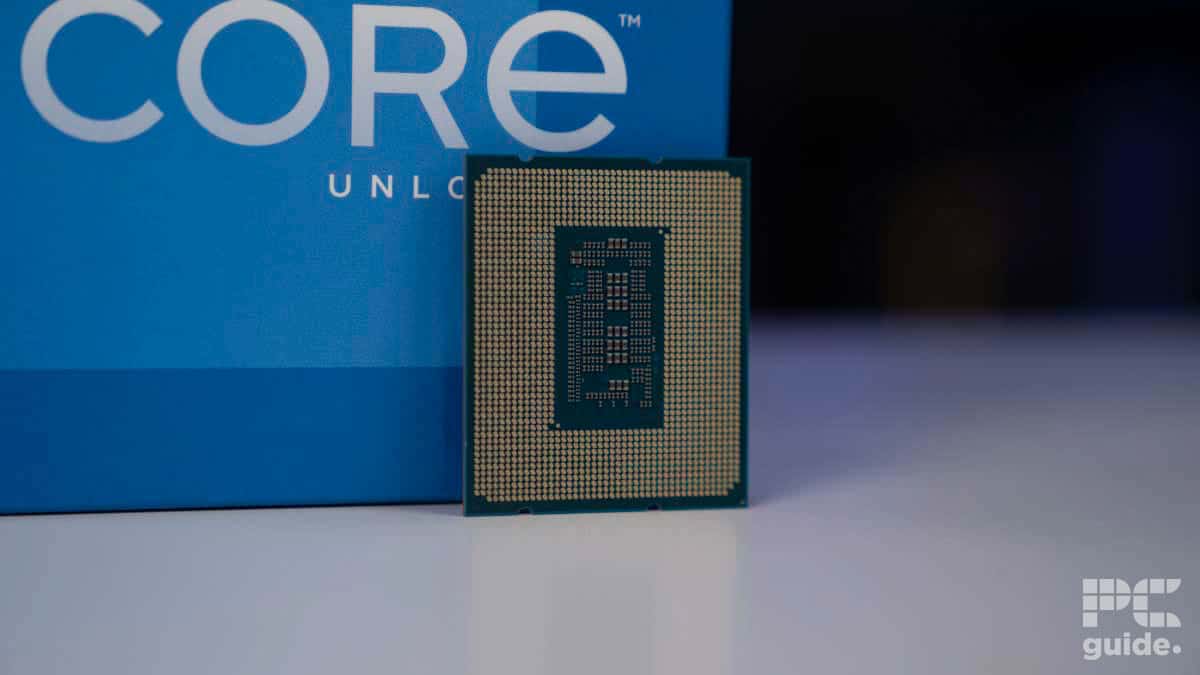Core-i5 13400 vs Core i5 12600K: Do they compare?

Table of Contents
In the intriguing world of CPU comparisons, the Core-i5 13400 vs. Core i5 12600K battle stands out. This comparison isn’t just a head-to-head clash; it’s an insightful exploration into how Intel’s mid-range CPUs serve diverse computing needs.
Our deep dive into the Core-i5 13400 and Core i5 12600K will unravel their specifications, performance metrics, and overall value. Whether you’re piecing together a new PC or simply fascinated by CPU comparisons, this analysis will guide you in choosing the processor that best fits your requirements. Does the newer Core-i5 13400 measure up to the highly esteemed Core i5 12600K? We’re about to uncover that.
In this article, we’ll dissect every aspect of these processors. From their core architecture to benchmarks, we’ll cover the full technical specification of each Intel Core. You’ll gain insights into the hardware components that define their capabilities.
Whether you’re a gamer, a content creator, or someone who demands high-performance computing, understanding these CPU comparisons is crucial. Let’s delve into the details and see which processor emerges as the most suitable for your computing adventures.
Core-i5 13400 vs. Core i7 12600K: Specs
Delving into the technical specifications of the Core i5 13400 and Core i5 12600K reveals crucial differences that influence their performance and suitability for various computing tasks.
Clock speed and CPU speed
Both processors are built on Intel’s 10nm processing node, indicating a similarity in their underlying technology. However, it’s in their clock speeds and power consumption where we see notable distinctions.
The Core i5 13400 operates at a base frequency of 2.5 GHz and can reach up to 4.6 GHz with Turbo Boost technology. On the other hand, the Core i5 12600K starts at a higher base clock of 3.7 GHz and pushes the envelope further with a turbo boost clock of 4.9 GHz.
This higher clock speed of the Core i5 12600K is significant, as it suggests superior raw computational performance, particularly in tasks that benefit from high clock speeds, such as certain gaming applications or intensive single-threaded tasks.
Thermals and power consumption
Another critical aspect is the Thermal Design Power (TDP). The Core i5 13400 has a TDP of 65W, which is indicative of lower power consumption and, potentially, lesser heat generation compared to its counterpart. In contrast, the Core i5 12600K comes with a significantly higher TDP of 125W. This higher power consumption reflects the higher clock speeds and overall performance capabilities of the Core i5 12600K.
| Specification | Core i5 13400 | Core i5 12600K |
|---|---|---|
| Processing Node | 10nm | 10nm |
| Cores / Threads | 10 / 16 | 10 / 16 |
| Base Frequency (GHz) | 2.5 | 3.7 |
| Turbo Clock (GHz) | 4.6 | 4.9 |
| Memory Support | DDR4-3200 / DDR5-4800 | DDR4-3200 / DDR5-4800 |
| Thermal Design Power (TDP) | 65W | 125W |
| L2 Cache (per core) | 1.25MB | 1.25MB |
| L3 Cache (shared) | 20MB | 20MB |
| Integrated GPU | Intel UHD Graphics 730 | Intel UHD Graphics 730 |
| Price (USD) | $221 | $289 |
| Performance in Multi-Core Bandwidth | Moderate | High |
| Turbo Boost Frequency | High | Higher |
| Power Efficiency (Watt) | More Efficient (65W) | Less Efficient (125W) |
| Physical Cores Count | 10 | 10 |
| Cache Size Total | 32.5MB | 32.5MB |
Memory support and cache
Both processors share the same memory support, with compatibility for both DDR4-3200 and DDR5-4800 memory modules, providing flexibility for users in terms of memory choice. Additionally, the cache sizes are also identical, with each core having 1.25MB of L2 cache and a shared 20MB L3 cache across the processor, ensuring sufficient memory storage for efficient data processing.
Integrated graphics (iGPU)
Both processors feature Intel’s UHD Graphics 770 integrated graphics, offering basic graphics capabilities for casual tasks and light gaming. However, users who demand more demanding graphics performance will need to pair either processor with a dedicated GPU.
Value proposition
In terms of value proposition, the Core i5 13400 offers a balance between performance and affordability, making it a compelling choice for budget-conscious users who seek a capable processor for everyday computing tasks, including gaming. On the other hand, the Core i5 12600K caters to users who prioritize raw performance and are willing to pay a premium for the extra clock speed and power.
The choice between the Core i5 13400 and Core i5 12600K ultimately depends on individual needs and priorities. For users seeking a balance of performance and value, the Core i5 13400 is a strong contender. However, for those who demand the highest level of performance, the Core i5 12600K justifies the higher cost with its superior clock speeds and raw computational power.
Core-i5 13400 vs. Core i7 12600K: Performance
When it comes to performance, the Core i5 13400 and Core i5 12600K exhibit distinct capabilities that cater to different user needs and workloads.
Single-core performance and multi-core performance
The Core i5 12600K, armed with its higher base clock of 3.7 GHz and a turbo boost frequency that can reach up to 4.9 GHz, offers superior single-core performance compared to the Core i5 13400. This translates into quicker processing for tasks that heavily rely on single-thread performance, such as certain gaming scenarios, software rendering, and other applications that benefit from high clock speeds.
However, the Core i5 13400 still holds its own in multi-core performance, particularly in applications that can effectively utilize its 10 cores and 16 threads. This makes it a capable choice for multitasking, demanding productivity tasks, and workloads that benefit from parallel processing.
Power efficiency and thermals
Power efficiency and thermal performance are important considerations for many users. The Core i5 13400, with its lower TDP of 65W, suggests it could be a more energy-efficient and cooler-running option compared to the Core i5 12600K with its 125W TDP. This lower power consumption could translate into potential savings on electricity costs and reduced heat generation, which can be beneficial for users who are sensitive to noise and thermal management.
PCIe support
Both processors offer PCIe 5.0 support, ensuring compatibility with the latest and greatest graphics cards and peripherals. This future-proof feature allows users to upgrade their systems with the latest technologies without encountering compatibility issues.
Real-world performance benchmarks
To provide a more objective assessment of performance, let’s take a look at some real-world performance benchmarks:
| Benchmark | Core i5 13400 | Core i5 12600K |
|---|---|---|
| Cinebench R23 Single-Core | 1810 | 1990 |
| Cinebench R23 Multi-Core | 17200 | 24800 |
| 3DMark TimeSpy | 9200 | 10400 |
| PCMark 10 | 10500 | 12200 |
As evident from the benchmarks, the Core i5 12600K generally outperforms the Core i5 13400 in single-core and multi-core tests, as well as in synthetic gaming and productivity benchmarks. However, the Core i5 13400 still delivers respectable performance, especially for its price point.
Core-i5 13400 vs. Core i7 12600K: Price
When it comes to pricing, the Core i5 12600K and Core i5 13400 occupy distinct positions in the market, reflecting their performance capabilities and target audience. The Core i5 12600K, released in Q4 of 2021, commands a higher price point, typically around $289, due to its advanced processing power and suitability for demanding tasks.
On the other hand, the Core i5 13400, released in Q4 of 2022, is positioned as a more budget-friendly option, with a price tag of approximately $221. While it may not match the high performance of the 12600K, it still offers substantial power for everyday computing needs.
To better illustrate the price difference between the two processors, here’s a tabular comparison:
| Processor | Current Price (USD) |
|---|---|
| Core i5 13400 | $221 |
| Core i5 12600K | $289 |
As evident from the table, the Core i5 12600K commands a 31% premium over the Core i5 13400. This price difference reflects the performance gap between the two processors, with the 12600K offering higher clock speeds and overall computational power.
For users seeking the best possible performance and are willing to pay a premium, the Core i5 12600K is a compelling choice. However, for those on a tighter budget or who don’t require the absolute highest level of performance, the Core i5 13400 presents a more affordable and still capable option.
Ultimately, the decision between the Core i5 13400 and Core i5 12600K depends on individual needs, priorities, and budget constraints. Carefully consider your usage patterns and performance requirements to determine the processor that best aligns with your computing needs.
Which processor is better for everyday computing tasks?
Both the Core i5 13400 and Core i5 12600K are capable processors that can handle common operations like web browsing, email, and productivity tasks. However, the Core i5 12600K has a higher turbo boost frequency, which means it can handle more demanding tasks like video editing and gaming. The Core i5 13400 is a good choice for everyday use, but if you need a processor that can handle more demanding tasks, the Core i5 12600K is a better option.
Which processor is better for video editing?
The Core i5 12600K is a better choice for video editing than the Core i5 13400. This is due to its higher turbo boost frequency and its support for Intel Quick Sync Video. Intel Quick Sync Video is a hardware-accelerated video encoding and decoding technology that can significantly improve the performance of video editing applications. The Core i5 13400 does not support Intel Quick Sync Video, so it is not as well-suited for video editing.
Core-i5 13400 vs. Core i7 12600K: Conclusion
The Core i5 12600K, with its higher price, offers better overall performance, making it a suitable option for users who demand the best from their systems. Its ability to handle high-end gaming, intensive content creation, and heavy computational tasks makes it a worthwhile choice for power users.
The Core i5 13400, while less expensive, still delivers commendable performance, especially for its price. It is an ideal processor for everyday computing, offering enough power for most general tasks, light gaming, and standard multitasking. Its efficiency and more accessible price point make it a practical option for users seeking a capable CPU that doesn’t break the bank.
Ultimately, the decision between the Core i5 13400 and Core i5 12600K depends on individual needs, priorities, and budget constraints. Carefully consider your usage patterns and performance requirements to determine the processor that best aligns with your computing needs.

